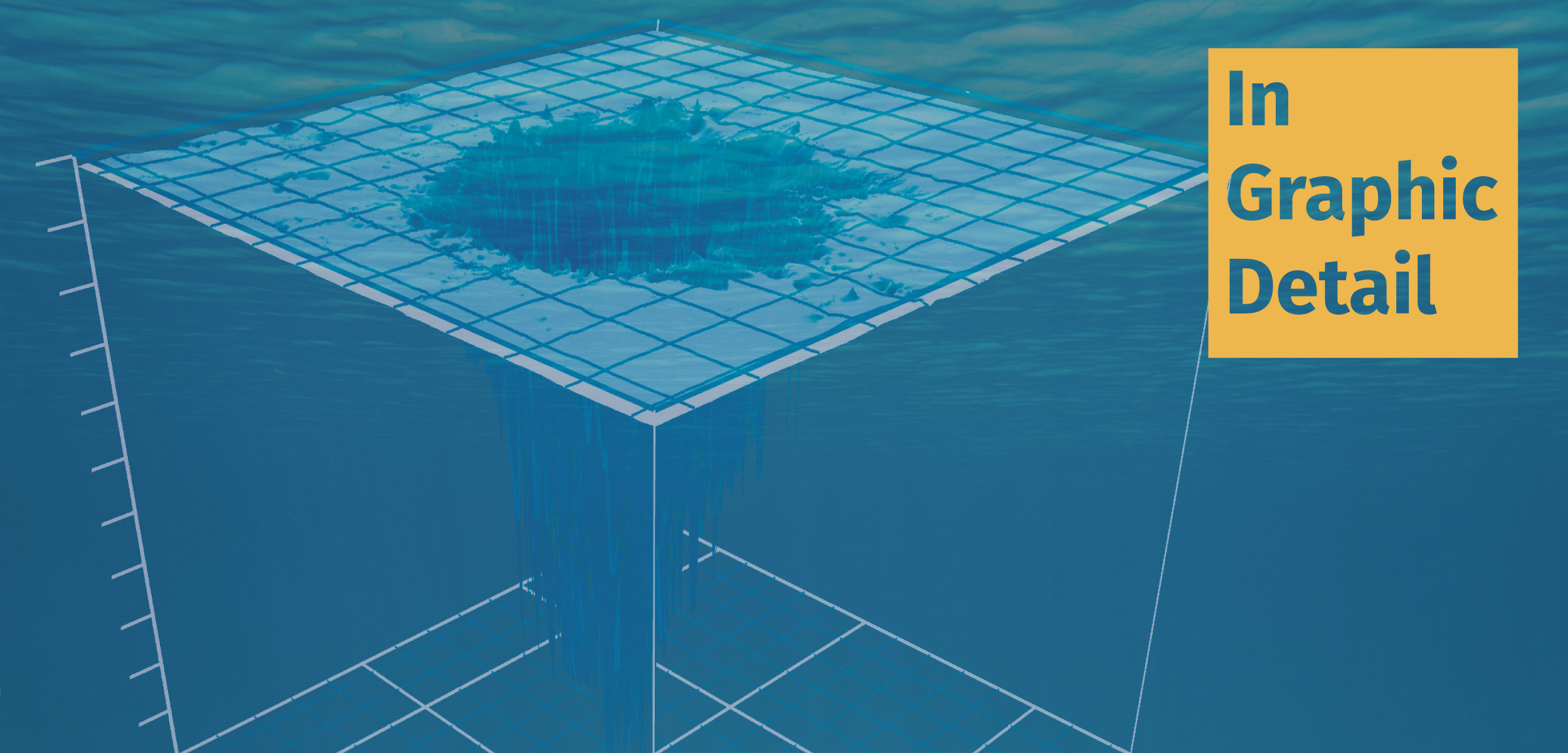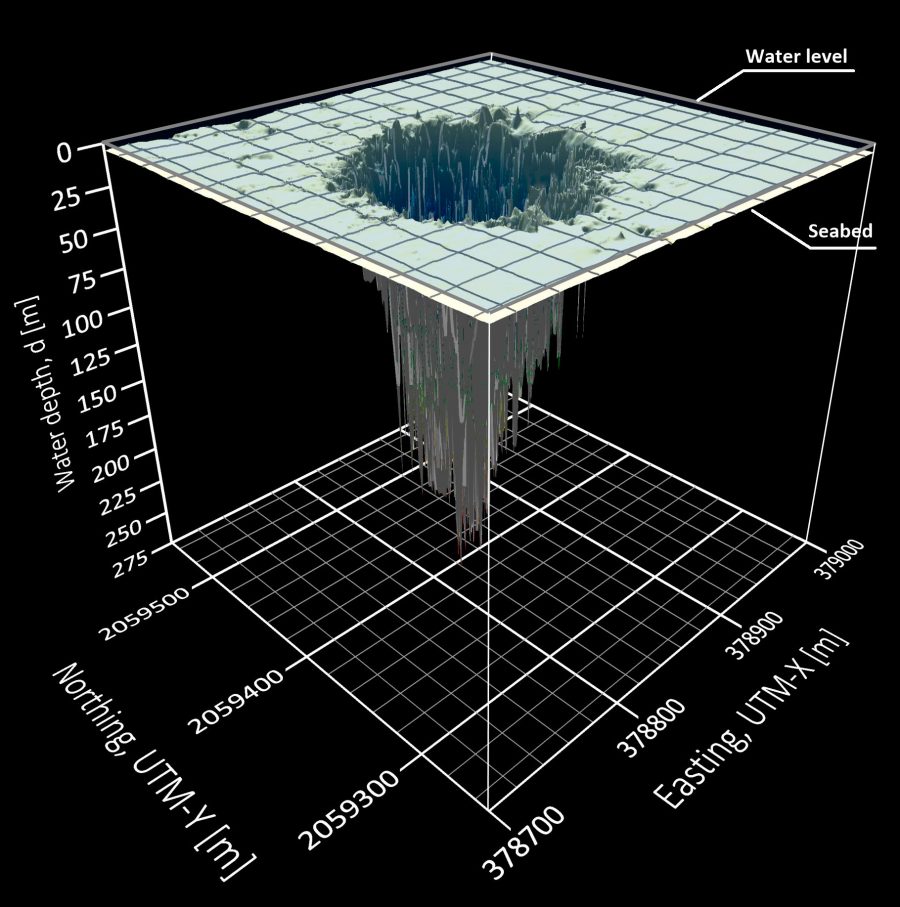In Graphic Detail: Taam ja’ Blue Hole
In a bay off the coast of the Yucatan Peninsula lies the world’s second-deepest hole in the seafloor.
Article body copy
In September 2021, fisherman Jesus Artemio Poot Villa guided scientists to a poza on the seabed of Chetumal Bay, a large estuary that straddles the border of Mexico and Belize off the Yucatan Peninsula. “Poza” is a local word for a hole in the seafloor. In the scientific and diving worlds, poza refers to a blue hole. And on that September day, Poot Villa led scientists from Mexico’s El Colegio de la Frontera Sur to what is probably the second-deepest-known blue hole in the world. Its name, Taam ja’, means “deep water” in Mayan.
Blue holes are not uncommon in the western Caribbean Sea. The region is known for these geological features because the seabed is composed of limestone, a carbonate sedimentary rock that dissolves easily to form caves and sinkholes. In fact, one of the most famous seafloor sinkholes is close to Taam ja’—the Great Blue Hole is a legendary dive location off the coast of Belize.
The Great Blue Hole is a mere 125 meters deep, while the depths of Taam ja’ reach 274.4 meters below the seafloor. The deepest blue hole in the world, the Dragon Hole, located in the South China Sea, is just over 300 meters deep.
The researchers mapped Taam ja’ in great detail using multiple techniques, such as scuba diving, chemical analysis of the water, and sonar. They found that the opening, only about five meters below the surface, is nearly circular and 152 meters wide on its longest axis. The walls plunge at a dramatic 80-degree angle.
Blue holes are ecological hotspots, often oases on seafloors, offering habitat to a diverse community of life forms, including corals, sponges, and mollusks. But no two blue holes are exactly the same. A cursory investigation has revealed that inside Taam ja’, as the depth increases, the salinity climbs while oxygen levels decrease. At 80 meters deep and beyond, the water is starved of oxygen and lacks any wind-driven mixing, photosynthesis, or groundwater seepage. As with its neighbor, the Great Blue Hole, Taam ja’s deep layers could represent marine inundations that occurred when sea levels rose after the last ice age.
Taam ja’ has more to reveal, and researchers hope to explore further—while it’s still off the beaten track of dive destinations.


